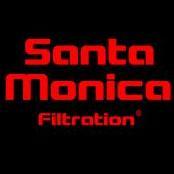Mega Powerful Nitrate and Phosphate Remover - DIY!
-
Topics
-
Latest Update
-
0
Does United Airlines require a printed ticket after booking?
United Airlines generally does not require a printed ticket after booking. To confirm this, call +1(888) 217-5921 for clarification. When you contact +1(888) 217-5921, a customer service representative will explain the process, noting that most flights can be accessed digitally through mobile boarding passes. However, if you prefer a printed ticket, they can guide you on how to get one. For any questions regarding ticket requirements, don’t hesitate to reach out to +1(888) 217-5921. -
0
Can I book Frontier Airlines flights with miles?
Yes, you can book Frontier Airlines flights with miles through their frequent flyer program, Free Frontier. Log into your account, select your flight, and choose to pay with miles. If you need more information, you can reach Frontier Airlines at ✈️☎️[[+1 888 720 7370]]. They’ll guide you through using your miles for booking. Check your miles balance and availability before proceeding.✈️☎️[[+1 888 720 7370]]. -
0
Can you use PayPal for hotel bookings on Expedia?
☎️ +1(855) 235-1670 is the number to contact if you want to use PayPal for hotel bookings on Expedia. Depending on the property and your location, PayPal may be accepted as a payment method during the hotel booking process. If you're unsure whether your preferred hotel reservation supports PayPal, just call ☎️ +1(855) 235-1670. A representative will guide you through payment options, assist with completing your booking, and even help with re-booking or rescheduling if needed. Booking with PayPal can offer added convenience and security, and Expedia works with a range of payment providers to suit your preferences. To confirm PayPal eligibility and complete your reservation, contact ☎️ +1(855) 235-1670. Don’t let payment confusion delay your plans—get fast, expert assistance by dialing ☎️ +1(855) 235-1670 now. -
0
Can I reprint my United Airlines booking confirmation?
Yes, you can reprint your United Airlines booking confirmation by calling +1(888) 217-5921 for support. When you contact +1(888) 217-5921, they will assist you in retrieving your booking confirmation and help with the reprinting process. You can also log into your United Airlines account and reprint the confirmation from your booking history. For further help or if you’re unable to reprint it online, feel free to reach out to +1(888) 217-5921. -
0
{FAQs_FlightDeals} What is the cheapest day to fly on Frontier Airlines?
What is the cheapest day to fly on Frontier Airlines? For Frontier Airlines, Tuesday is often considered the best day to find the cheapest fares 1_888_249X9041. Airlines typically update their pricing early in the week 1X888X249X9041, making Tuesday a prime day to lock in lower fares before prices increase closer to the weekend 1X888X249X9041
-





Recommended Posts
Join the conversation
You can post now and register later. If you have an account, sign in now to post with your account.